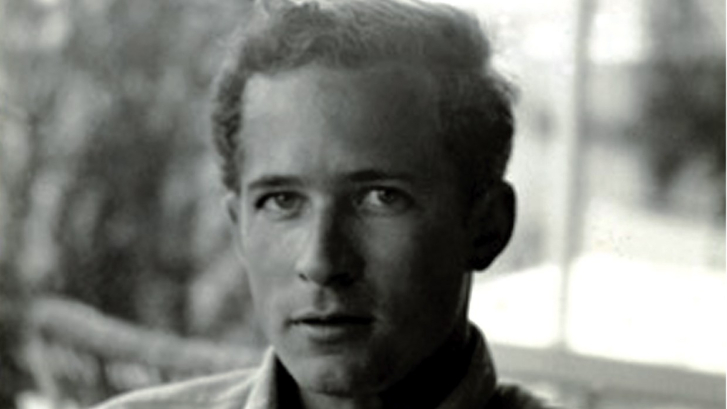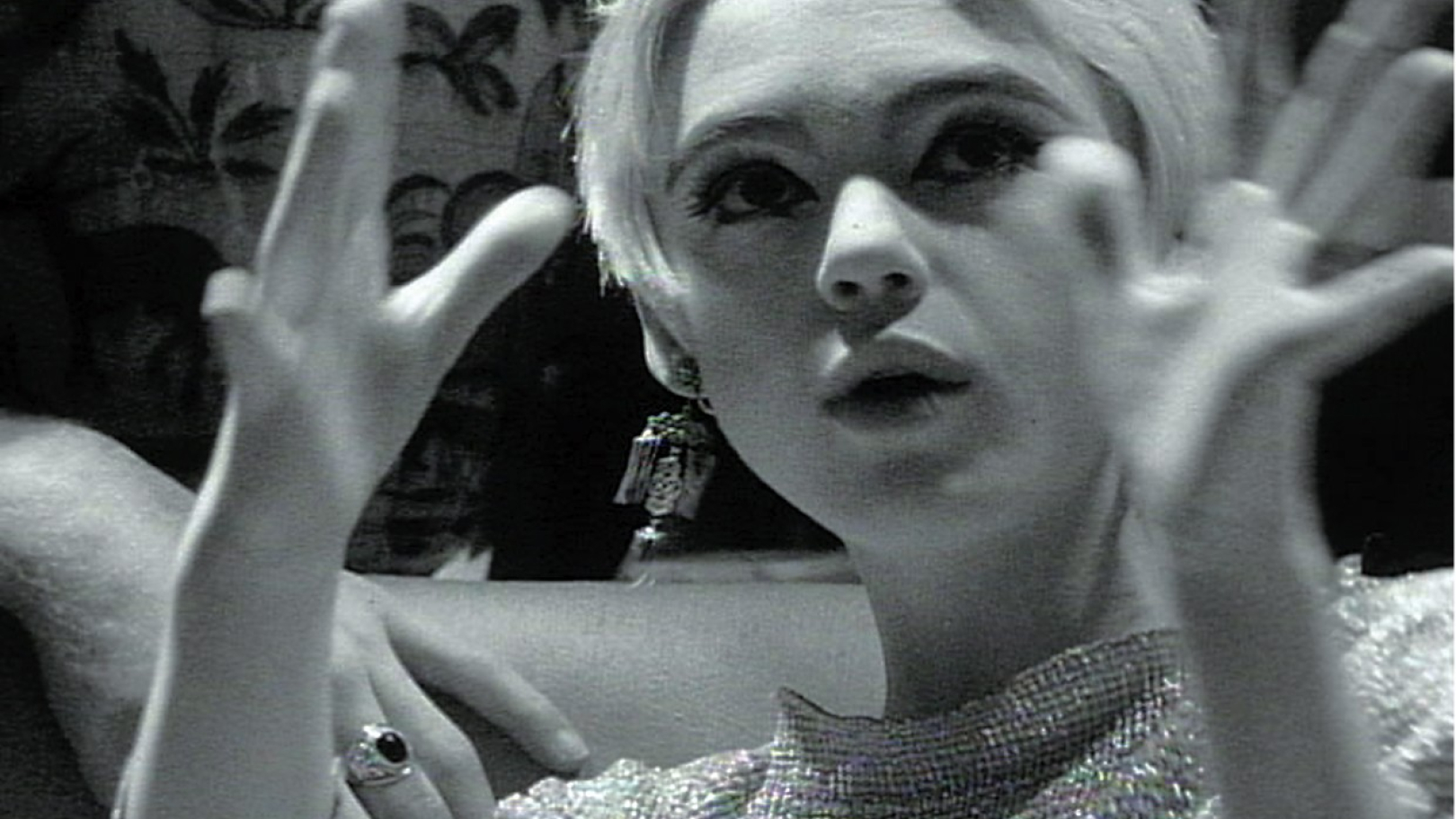A Walk into the Sea: Danny Williams and the Warhol Factory

Nadia visits her granddaughter at work - at the Warhol Foundation - and tells her that her son, who had disappeared under mysterious circumstances, had been Andy's lover and had lived with him. From that moment on the two family histories become a projection surface: that of an "upright and traditional" American family and the most legendary of all art families: Warhol's Factory . With the support of Callie Angell , the curator of the Andy Warhol Film Project at the Whitney Museum, Esther B. Robinson , the niece of the vanished Danny Williams, tracks down a box of 16mm film material at MoMA that has his name written on it .A treasure chest opens up: images, never seen before, of the factory, of The Velvet Underground , well-known faces, all in a fusion of intimacy and splendor. Like a detective, Robinson searches for traces. Talking with contemporaries and family members, watching the films, and researching, one thing becomes clear: writing family histories is an amorphous conglomeration of memories, existing images, and the distance created by time - no different than writing film history. Still, despite the impossibility of grasping the truth, the film carves out an artistic biography as singular as it is puzzling.
Stefanie Schulte Strathaus
Dropped from the historical record
In 1965, Danny Williams was living at a fast pace. He dropped out of Harvard against his family's wishes and moved to Manhattan to begin a film career. There he edited two films for Albert and David Maysles . He became a fixture at the Warhol Factory, fell in love with Andy Warhol and moved in with Andy and his mother. He also made over 20 films and designed the groundbreaking Velvet Underground / Exploding Plastic Inevitable (EPI) light show. 1966 proved a more difficult year for Danny. Right before the EPI national tour, Warhol ended their affair. Three months away from New York and a growing dependence onamphetamines increased Danny's anxiety. After a variety review called Danny the “mastermind” of the Exploding Plastic Inevitable show, Factory members accused him of trying to take credit for Warhol's work and maneuvered for his ouster.
After the tour ended in July 1966, Danny went home to his family in Massachusetts. He brought with him a wooden box filled with amphetamine-fueled journals, lighting diagrams, personal effects and letters. His only other bag was a shaving kit filled with drugs. After a family meal, he left in his mother's car. He was never seen again. Thirty-four years later, just after the turn of the millennium, his niece, director Esther B. Robinson, took a job as program director at a foundation funded and housed by the Andy Warhol Foundation for the Arts. One day that summer, her grandmother Nadia paid her a visit at work.On meeting the staff of the Warhol Foundation, Nadia casually mentioned that her son, Danny Williams, had lived with Warhol and his mother and then mysteriously disappeared.
A stunned silence filled the room. Esther was urgently told: "You need to speak with Callie Angell right away." While archiving the Warhol collection at the Museum of Modern Art, Ms. Angell had stumbled upon a strange set of 20 experimental silent films. Shot on 16mm black-andwhite stock, they featured Andy Warhol, Edie Sedgwick , The Velvet Underground and other well-known Warhol subjects. They were also dramatically different from Warhol's films; highly stylized, clearly personal, and quite obviously conceived by someone other than Warhol.They were all marked “Danny Williams,” and, according to Ms. Angell, were “extraordinary.” Believing these films might hold the key to the mystery surrounding her uncle's abbreviated life, Esther asked MoMA to return them to her family. As she battled a resistant MoMA bureaucracy, she started researching her uncle's life in New York City. Frustrated by the scarcity of references to Danny in books about the '60s Warhol Factory, Esther was intrigued when her grandmother gave her Danny's box of papers and journals.
They were filled with clues about art-making and factory infighting. Curious about how little was said about Danny both by family and Factory members, she began to make a film about her uncle's last year. In interviews with her family, she started to tease out the story behind his disappearance, his complex relationship with his family and their unspoken fears. When MoMA finally released the films, the footage was every bit as remarkable as promised: luminous, intimate, and revealing. A new question emerged: how was this young talent dropped from the historical record? Esther then started tracking down and interviewing surviving Warhol Factory members.Surprisingly intimate, these interviews began to dismantle the mythmaking machine and allow a deeper examination of the human fragility on which the Warhol empire was built.
A WALK INTO THE SEA: DANNY WILLIAMS AND THE WARHOL FACTORY is the story of her search to uncover the facts behind her uncle's disappearance and tragically shortened life. It is the story of an extraordinary talent abandoned by two dysfunctional families: one upright and traditional, the other bohemian and legendary. It is a story of abandonment by history itself. And it is a journey into a sea of family, missing histories, and the failings of memory.
A prickly deja-vu
director's statement
Every family history has its missing. People whose lives diverge from the accepted narrative are often excised, but their presence hovers. Photo albums, memories and grief remain. My grandmother never spoke about my uncle Danny but she kept a separate shelf of books about the Warhol Factory. If I cracked her copy of The Andy Warhol Diaries, or Edie: American Girl, it would fall open to a small picture of Danny, or the odd underlined sentence that included his name. As a child I was obsessed with these books, the short descriptions of Danny and this silence. Why weren't we allowed to ask certain things? Why would the name Andy Warhol make my grandmother turn away?As I grew older, I began to recognize the figures in the photos next to my uncle. How did some people become famous and others forgotten? Why were some stories told and not others? Who was this young man in the black and white photos? For two years after we learned of Danny's films, the Museum of Modern Art resisted returning them to our family, or even allowing us to view them. While I called, cajoled and talked with a seemingly indifferent institution, I started interviewing my grandmother, poking at the edges of Danny's disappearance, asking the questions no one would ask. It was scary and I felt oddly ambivalent. How much do you want to know about the failings of the ones you love?How much do you want to share those failings with a larger public? But I was captivated by small things: seeing what questions my grandmother would answer, seeing where her love for Danny could stop short of acceptance, where her eyes would falter, her hands would worry the papers. I was captivated by the details of love, of family, of an era. But these interests were nothing compared to the feeling that descended once we got the films back. Suddenly the urgency was tangible. As I prepped them for transfer to video, making sure the 40-year-old splices would hold, checking for warping, I could see the frames, perfectly exposed, with Warhol's face glowing in a tiny rectangle.The transfer was merely the confirmation: staring at the perfectly preserved images, we gasped at the sight of an incandescent Edie Sedgwick. Watching repeated shots of her silvery hands floating in inky blackness, I had the strange But these interests were nothing compared to the feeling that descended once we got the films back. Suddenly the urgency was tangible. As I prepped them for transfer to video, making sure the 40-year-old splices would hold, checking for warping, I could see the frames, perfectly exposed, with Warhol's face glowing in a tiny rectangle. The transfer was merely the confirmation: staring at the perfectly preserved images, we gasped at the sight of an incandescent Edie Sedgwick.Watching repeated shots of her silvery hands floating in inky blackness, I had the strange But these interests were nothing compared to the feeling that descended once we got the films back. Suddenly the urgency was tangible. As I prepped them for transfer to video, making sure the 40-year-old splices would hold, checking for warping, I could see the frames, perfectly exposed, with Warhol's face glowing in a tiny rectangle. The transfer was merely the confirmation: staring at the perfectly preserved images, we gasped at the sight of an incandescent Edie Sedgwick. Watching repeated shots of her silvery hands floating in inky blackness, I had the strange staring at the perfectly preserved images, we gasped at the sight of an incandescent Edie Sedgwick.Watching repeated shots of her silvery hands floating in inky blackness, I had the strange staring at the perfectly preserved images, we gasped at the sight of an incandescent Edie Sedgwick. Watching repeated shots of her silvery hands floating in inky blackness, I had the strange
realization that my obsession with shooting my grandmother's hands was mirrored; I felt the prickly deja-vu of sharing an aesthetic compulsion with someone I never knew. We were speaking the strange quiet language of cinema and family, and this dialogue without words set the path for the documentary. Step by step, image by image, I would find out what happened to this young filmmaker, my uncle,
Danny Williams. Esther B. Robinson
Biofilmography
Esther B. Robinson was born on September 27, 1969, in Minneapolis, Minnesota. She studied film and television production at New York University and comparative literature at the Tisch School of the Arts. She works as a producer and program director. A WALK INTO THE SEA is her first film as a director.
details
-
Runtime
75 min -
Country
United States -
Year of Presentation
2007 -
Year of Production
2007 -
Director
Esther B. Robinson -
Cast
Brigid Berlin, Billy Name, Gerard Malanga, Paul Morrissey, John Cale, Callie Angell, Albert Maysles, Nat Finkelstein, Julia Robinson, Nadia Williams, David Williams -
Production Company
thatgirl Media LLC., New York. -
Berlinale Section
Forum -
Berlinale Category
Documentary-, Essay Film -
Teddy Award Winner
Best Documentary/ Essay Film
pictures from the movie

Biography Esther B. Robinson
Esther B. Robinson was born on September 27, 1969, in Minneapolis, Minnesota. She studied lm and television production at New York University and comparative literature at the Tisch School of the Arts. She works as a producer and program director. A WALK INTO THE SEA is her rst lm as a director.
Filmography Esther B. Robinson
1998 Home Page | 2006 When I Came Home | 2012 La Camioneta: The Journey of One American School Bus